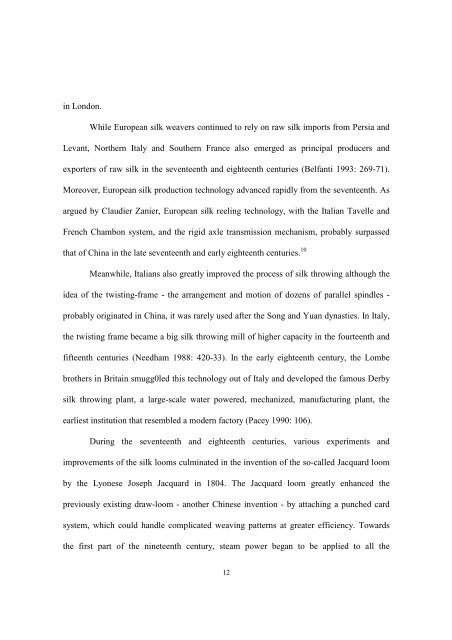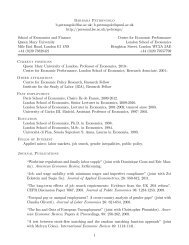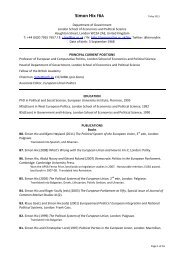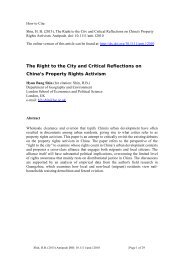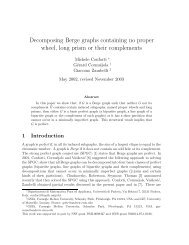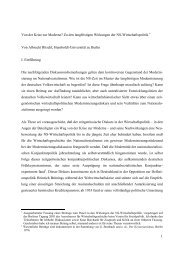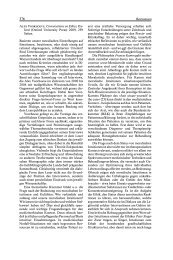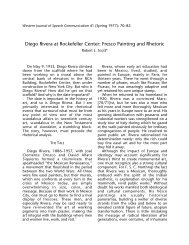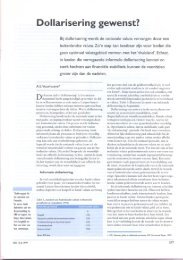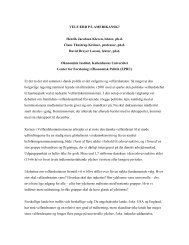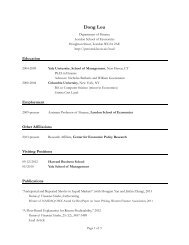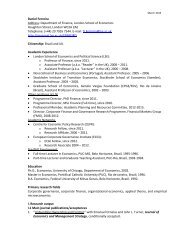Reference: MA, Debin. “The Great Silk Exchange: How the World ...
Reference: MA, Debin. “The Great Silk Exchange: How the World ...
Reference: MA, Debin. “The Great Silk Exchange: How the World ...
Create successful ePaper yourself
Turn your PDF publications into a flip-book with our unique Google optimized e-Paper software.
in London.<br />
While European silk weavers continued to rely on raw silk imports from Persia and<br />
Levant, Nor<strong>the</strong>rn Italy and Sou<strong>the</strong>rn France also emerged as principal producers and<br />
exporters of raw silk in <strong>the</strong> seventeenth and eighteenth centuries (Belfanti 1993: 269-71).<br />
Moreover, European silk production technology advanced rapidly from <strong>the</strong> seventeenth. As<br />
argued by Claudier Zanier, European silk reeling technology, with <strong>the</strong> Italian Tavelle and<br />
French Chambon system, and <strong>the</strong> rigid axle transmission mechanism, probably surpassed<br />
that of China in <strong>the</strong> late seventeenth and early eighteenth centuries. 10<br />
Meanwhile, Italians also greatly improved <strong>the</strong> process of silk throwing although <strong>the</strong><br />
idea of <strong>the</strong> twisting-frame - <strong>the</strong> arrangement and motion of dozens of parallel spindles -<br />
probably originated in China, it was rarely used after <strong>the</strong> Song and Yuan dynasties. In Italy,<br />
<strong>the</strong> twisting frame became a big silk throwing mill of higher capacity in <strong>the</strong> fourteenth and<br />
fifteenth centuries (Needham 1988: 420-33). In <strong>the</strong> early eighteenth century, <strong>the</strong> Lombe<br />
bro<strong>the</strong>rs in Britain smugg0led this technology out of Italy and developed <strong>the</strong> famous Derby<br />
silk throwing plant, a large-scale water powered, mechanized, manufacturing plant, <strong>the</strong><br />
earliest institution that resembled a modern factory (Pacey 1990: 106).<br />
During <strong>the</strong> seventeenth and eighteenth centuries, various experiments and<br />
improvements of <strong>the</strong> silk looms culminated in <strong>the</strong> invention of <strong>the</strong> so-called Jacquard loom<br />
by <strong>the</strong> Lyonese Joseph Jacquard in 1804. The Jacquard loom greatly enhanced <strong>the</strong><br />
previously existing draw-loom - ano<strong>the</strong>r Chinese invention - by attaching a punched card<br />
system, which could handle complicated weaving patterns at greater efficiency. Towards<br />
<strong>the</strong> first part of <strong>the</strong> nineteenth century, steam power began to be applied to all <strong>the</strong><br />
12


